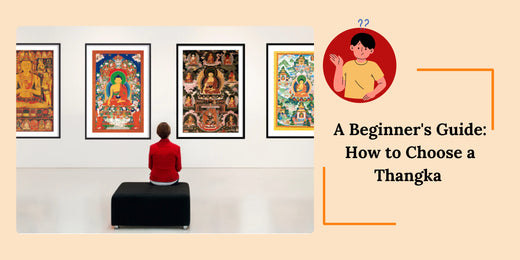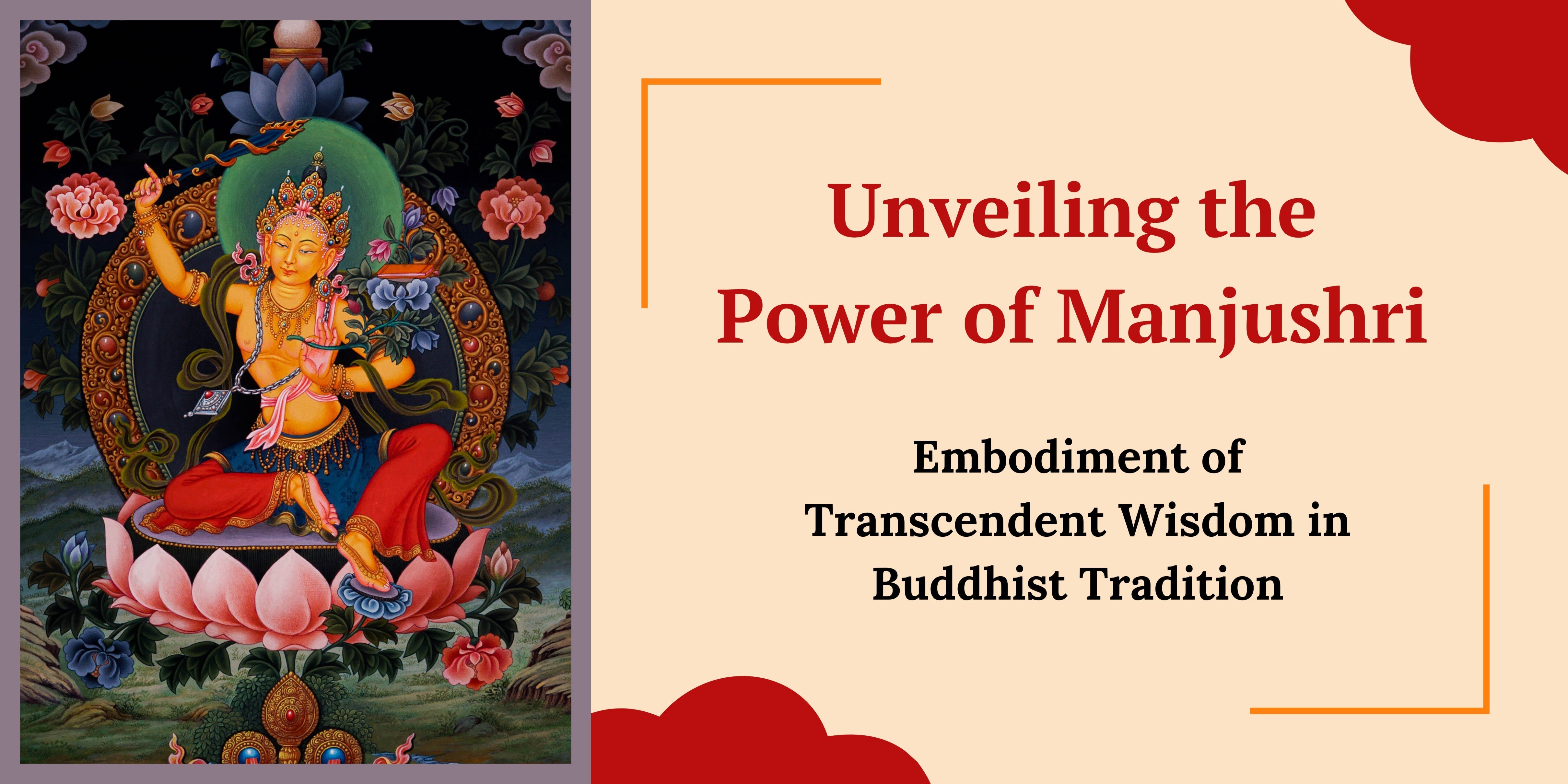
How to choose a Thangka? A Beginner's Guide
Choosing the perfect Thangka for a room involves careful consideration. For generations, the rich textures and vivid colors of Thangka paintings have been an essential component of Tibetan Buddhist culture. These holy pieces of art are not only beautiful works of art that draw admirers from all over the world, but they also function as religious instruments.
Let's look at a few essential criteria you must consider when choosing a Thangka that appeals to you
1. Recognizing the purpose
Are you searching for a Thangka Painting for your home's interior design, meditation, or spiritual practice?
Buddhist murals feature specialized religious or spiritual themes. These religious artworks serve as visual representations of religious values with an artistic quality that goes beyond their physical form. It is critical to grasp the meaning hidden in Thangka paintings and pick something that speaks to your heart, allowing you to have a deep connection with the holy. You can choose the appropriate theme and size by being aware of the intended use.
2. Theme and Illustration:
Every component of a Thangka has a symbolic meaning. These one-of-a-kind works depict a wide range of subjects, such as religious figures and historical events to everyday life and mythology. Although the specific content varies, these captivating artworks share several recurring themes and subjects. Every component has a symbolic meaning. Thangka paintings illustrate the following subjects:
Portraits of Buddhist Deities
Thangka paintings often depict Tibetan Buddhist deities and Buddhas, such as Zambala, Padmasambhava, the 21 manifestations of Divine Tara. Along with them, several other deities and their emanations appear in thangka paintings. These enlightened beings inspire devotion and enlightenment, often postponing liberation to help others. Their tranquil expressions and symbolic gestures facilitate enlightenment.


Mandalas: Portals into Spiritual World
Mandalas are formed with intricate geometric patterns that represent the universe and often serve as the focal point of thangka compositions.These cosmic diagrams represent the interconnectedness of all phenomena and offer a path to higher levels of consciousness. Mandalas in thangkas are meticulously crafted, with each element having a specific symbolic meaning.


Tales of the Buddha's earlier lives: Jataka Stories
Thangka paintings depict the Buddha's previous lives, emphasizing his teachings of compassion, generosity, and selflessness, as well as his path to enlightenment through Jataka stories, which are a common theme in Buddhist artwork. These tales teach moral lessons and depict the Buddha's journey to enlightenment through various incarnations.
Look into the meanings associated with various themes to select a Thangka that both suits your aesthetic preferences and your spiritual views.

3. Artistry Quality and Materials Utilized:
A Thangka requires skill, attention to detail, intricate motifs, and capturing Buddhist teachings. The artwork's depth and richness are enhanced by mineral pigments on cotton or silk canvases. Contemporary Thangkas may incorporate alternative materials for unique aesthetic appeal. A well-executed Thangka should evoke spiritual significance and visual harmony.

4. Accuracy and Authenticity
Handcrafted Thangkas sourced from skilled artisans offer a one-of-a-kind and authentic experience, as compared to mass-produced imitations. Thangkas are not just cultural illustrations, they convey profound symbolism and adhere to specific iconographic guidelines passed down through generations. The lineage tradition of iconography is crucial in promoting a deeper connection with a spiritual figure, thereby enhancing our understanding of the spiritual path.
Right here are some of the significant iconographic features you should be aware of to ensure the overall quality of the painting:
- Mudras or Hand Gestures: Mudras are symbolic hand gestures in Buddhism that are used to evoke mental states or convey ideas. Mudras must be studied before purchasing thangkas.
- Attire: The deities are portrayed wearing traditional monk's robes or in elaborate garments such as shawls, silk skirts, or tunics with gold patterns. Outfits often signifies the attainment of freedom from internal afflictions and disturbances.
- Stance: Buddhist deities and figures are portrayed in a variety of postures representing mindful and conventional practices. These postures, such as meditative and dancing deities, represent divinity while conveying deeper Buddhist teachings or meaning.
Ensure that your Buddhist thangka adheres to your tradition's standards, as attributes differ within literary works and practices.
5. Size, Care and Framing.
Thangkas come in various sizes from small, hand-held pieces to larger wall hangings, suitable for personal meditation spaces or living or meditation rooms, and should be displayed in a suitable space, considering the available space. Thangkas need to be properly cared to retain their beauty, which includes following the recommended care instructions for the materials used, such as protecting them from direct sunlight, dust, and humidity. There are a number of options available to protect, preserve, and display the painting based on your preferences, inclinations, and budget. In addition to cost, frames can be an aesthetic element.
Here are some of the framing techniques and options to add to the aesthetics of a Thangka.
Brocade framing is a traditional method used to frame Thangkas, using intricately woven fabric as a border.

- Wood Framing
Wood framing is a great option for thangkas, as it provides a secure, snug enclosure and optimal protection. Crafted from hardwood and often coated with gold paint, it enhances the aesthetic appeal and allows for greater personalization.

6. Personal Connection
Purchasing a Thangka is a crucial step in your spiritual journey, as it carries emotional resonance and can enhance your spiritual practice. It's essential to consider factors like materials, iconographic accuracy, size, aesthetic essence, and framing to ensure a meaningful connection. Select a Thangka that speaks to you personally The Thangka selection process is a meaningful process that involves personal connection, aesthetic journey, and purpose. By considering quality, size, authenticity, color, budget, and care, you can find the perfect Thangka to enrich your spiritual journey.
Let’s Begin your Spiritual Journey !!!!


